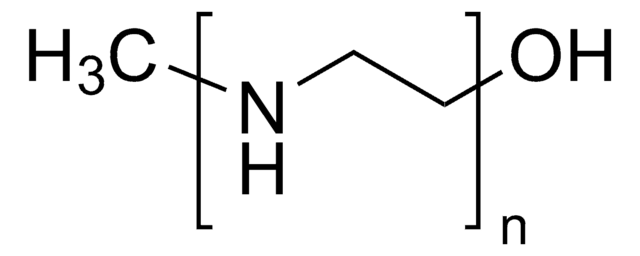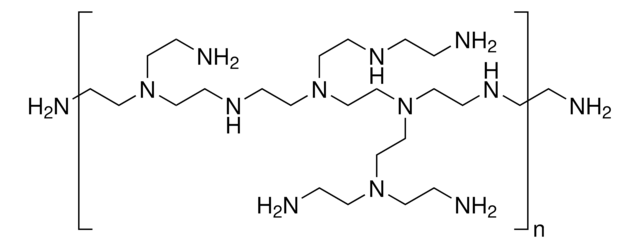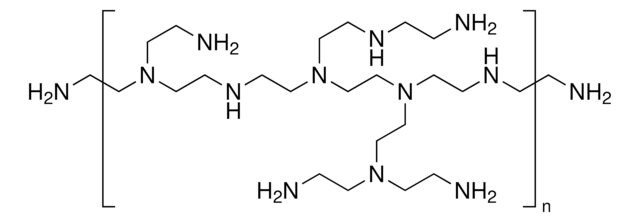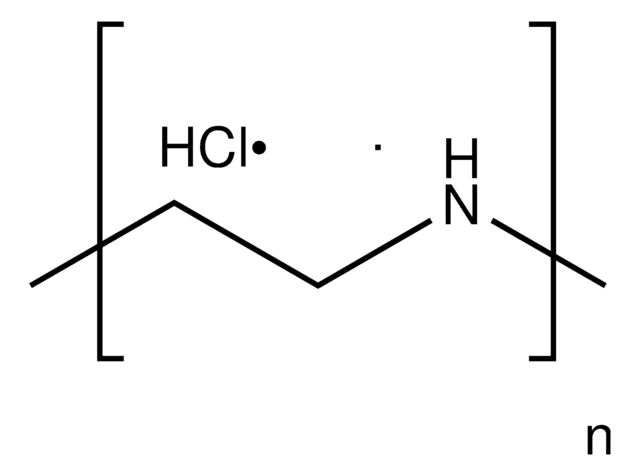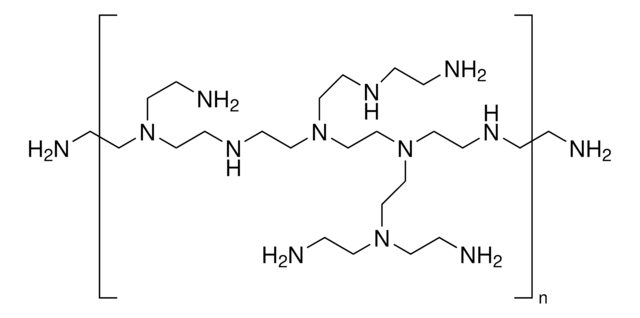764582
Polyethylenimine, linear
average Mn 5,000, PDI ≤1.3
Synonym(s):
PEI
About This Item
Recommended Products
form
solid
Quality Level
mol wt
average Mn 5,000
mp
54-59 °C
PDI
≤1.3
storage temp.
2-8°C
InChI
1S/C2H5N/c1-2-3-1/h3H,1-2H2
InChI key
NOWKCMXCCJGMRR-UHFFFAOYSA-N
Looking for similar products? Visit Product Comparison Guide
Related Categories
General description
signalword
Warning
hcodes
Hazard Classifications
Eye Irrit. 2 - Skin Irrit. 2
wgk_germany
WGK 3
flash_point_f
Not applicable
flash_point_c
Not applicable
Certificates of Analysis (COA)
Search for Certificates of Analysis (COA) by entering the products Lot/Batch Number. Lot and Batch Numbers can be found on a product’s label following the words ‘Lot’ or ‘Batch’.
Already Own This Product?
Find documentation for the products that you have recently purchased in the Document Library.
Customers Also Viewed
Articles
Delivery of Nucleic Acids Using Polymers
Gene therapy has become one of the most discussed techniques in biomedical research in recent years.
Professor Yoshiki Katayama (Kyushu University, Japan) discusses recent advances in drug delivery systems and strategies that exploit the EPR effect, with a special focus on stimuli-responsive systems based on novel materials.
The CRISPR/Cas9 system has recently emerged as a highly specific, efficient, and versatile gene editing technology that can be utilized to build disease models and correct diseased genes. Safe and effective delivery vectors for the CRISPR/Cas9 system are in critical need to enable clinical development and future applications of CRISPR/Cas9 systems. Professor Yang Liu summarizes recent progress in nonviral nanoparticle approaches for CRISPR/Cas9 delivery.
Our team of scientists has experience in all areas of research including Life Science, Material Science, Chemical Synthesis, Chromatography, Analytical and many others.
Contact Technical Service